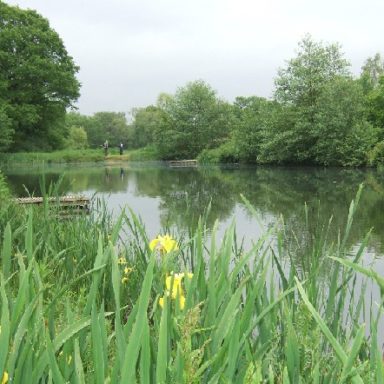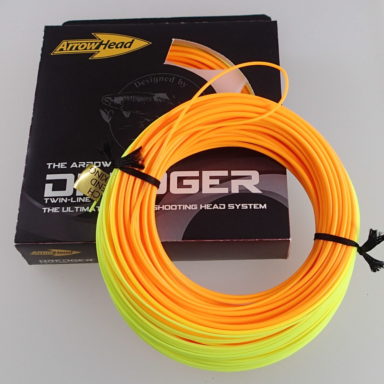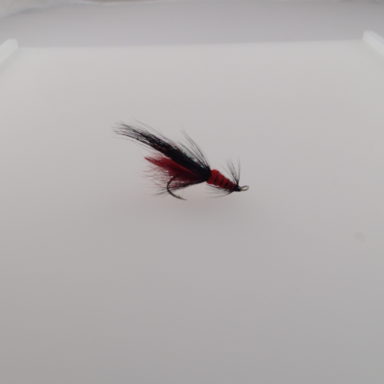Welcome to my help and advice section. I do hope you are reading this before you have purchased any fly fishing tackle because in my 25 or so years as a full time instructor I have seen a good many casting problems simply caused by ill-fitting or badly balanced tackle.
On the following pages you will hopefully find advice, not only relating to my ArrowHead products, but about all aspects of buying fly-fishing tackle for trout, sea-trout, salmon, coarse fish such as pike and chubb and salt water species such as bass, bonefish, tarpon, permit and many others.
Fly fishing is not that different from any other form of angling, in that a bait (in this case, an artificial ‘fly’) is presented to a fish which hopefully has an inclination to grab it.
Your job is threefold. First, you have to select a ‘fly’ that your quarry might find appetizing enough to want to eat or irritating enough to grab. Second, you have to find a fish that is so inclined. Thirdly, you have to present your fly to the fish, ie get it near enough to the fish to give it the chance to grab it without scaring it. Of the three, the presentation bit is the hardest, casting the fly.
Fly casting is one of those irritating things in life that looks remarkably simple when someone else does it, but is not quite as simple as it looks. It is also the most important skill required of the would-be fly fisher. The theory seems comparatively simple, but teaching it through the printed word is actually very difficult. It is better, by far, to seek personal tuition from a qualified instructor right from the outset, but failing that at least have a look at an instructional film before you give it a go. My DVDs “Trout fishing & Fly Casting” or “Salmon Fishing & Spey Casting” are widely acclaimed and have even been screened on one of the Sky Channels. The good thing about owning the DVDs is that you can view them again and again whenever you like.
Casting a fly as opposed to a bait has one important difference. Instead of trying to cast a mass that is concentrated in one lump (e.g., spinner, lead, etc.) which will carry the line out with it, in fly fishing, because the fly is almost weightless, the casting weight is spread out along the length of fly line. Lines are graded into weights either measured in Grams or under a system called AFTM (Association of Fishing Tackle Manufacturers) measured in grains (yes from grains of wheat!) and grouped into a table where 0 is the finest and the higher numbers the heaviest.
First off you need a fly line to suit the bulk and weight of fly you are trying to cast. A tiny chalk-stream trout pattern will cast easily on a fly line of AFTM 0 – 5, But for say a big 3″ brass tubed salmon fly you would need a fly line AFTM 10 or more.
Next you need a rod spring that will match the fly line weight – more about that in the rod section.
But finally you need the whole combination to match you!
Casting is considerably easier if you start with a properly balanced outfit that suits your size and strength. Like choosing a stone for a throwing contest, you want neither a large boulder nor a tiny speck of grit, but a nice aerodynamic pebble that suits your size and strength
Here is the AFTM table and its corresponding weights of the casting portion of the line.
|
||||||||||||||||||||||||||||||||||||||||||
If you are still with me you might be now asking “Ok where do you suggest I start then?”
My advice would be that you start with a simple trout outfit. A rod and line combination rated 6/7 will be ideal for most people and my standard 6/7 rod is appropriately called “The Allrounder” . If you are of a slightly weaker stature ie the ladies – Screams of chauvinistic indignation are allowed – a slightly lighter line rod will provide a little less wrist strain but will still have a heavy enough line to be easy to cast a good range of flies for most trout waters. My version is called “The Stalker”.
If you are buying for a youngster, I have found that they have a slightly different need from your average adult. With rather more enthusiasm than technique, a shorter head line with plenty of throwing weight, gives them an easy way to get a line out. My purpose designed rod and line for this is called “The Poacher” Great for getting kids started, but also a good brook rod for the grown ups.
If you are taking up salmon fishing for the first time, you will probably be looking for a double handed fly rod sometimes called a Spey Rod and because you get to use both hands you will be able to cope with an outfit that casts heavier lines (and thus bigger heavier flies) my best advice for a salmon rod and line combination for most people would be a 10/11 weight, though again if you are of a smaller or weaker stature a 9/10 weight would be better.
If you want more specifics about rod lengths and line types then reels and other tackle, please now move on to their own sections in the advice menu.





